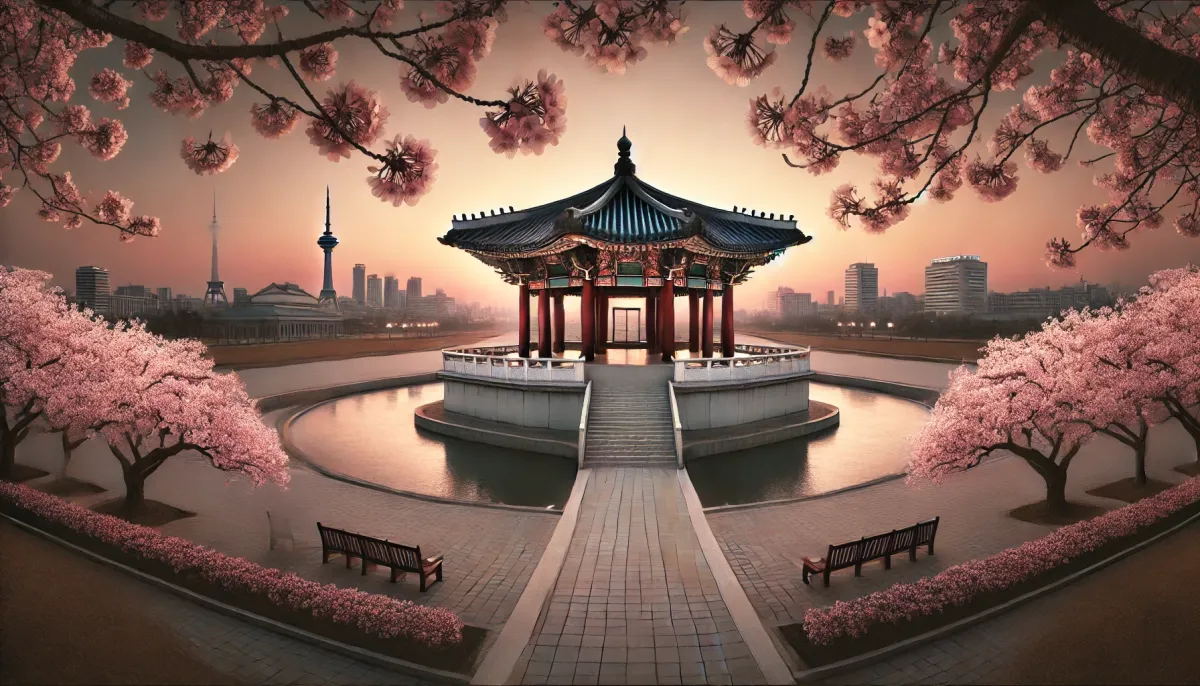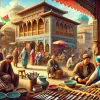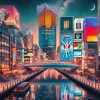North Korea, shrouded in mystery, often conjures images of drab buildings and empty streets. But having ventured into Pyongyang, the nation's capital, I found it even more enigmatic than I'd imagined. This city, a focal point of North Korea's recent economic push, has undergone significant transformation. Join me as I recount my 2022 journey exploring Pyongyang, one of the world's most secretive cities, and uncover the intriguing layers beneath its surface.
The Enigmatic Ryugyong Hotel: A Symbol of Mystery
Dominating Pyongyang's skyline is the pyramid-like Ryugyong Hotel. This colossal structure, standing at 330 meters, was a testament to North Korea's ambition in the 1980s. Intended as the world's tallest hotel, its construction halted in 1992 due to the Soviet Union's collapse, leaving it a stark reminder of economic hardship. For two decades, it remained untouched, a silent giant looming over the city. Construction resumed in 2012 with the installation of glass panels, but the interior remains unfinished, resembling an ancient tomb rather than a luxury hotel. While LED screens now adorn its facade, broadcasting North Korean propaganda, and lights flicker on some floors, its grand opening remains a mystery, adding to the intrigue surrounding this colossal structure.
The Curious Case of the Yanggakdo International Hotel
Most foreign visitors to Pyongyang find themselves at the Yanggakdo International Hotel, a 47-story, 170-meter-tall structure located on an island in the Taedong River. Built in 1995, it offers stunning views, yet within its walls lies an intriguing peculiarity: the missing 5th floor. While the button is absent from the elevator panel, the floor exists, harboring mysterious rooms and walls adorned with propaganda posters. The infamous story of Otto Warmbier, the American student detained for allegedly attempting to steal a propaganda poster from this floor, adds another layer to its mystique.
A Glimpse into Pyongyang's Landmarks and Daily Life
My guided tour, mandatory for all foreign visitors, offered a curated view of Pyongyang. Kim Il-Sung Square, the city's central plaza, mirrors Tiananmen Square in design and serves as a venue for significant political and cultural events. Nearby stand the Korean Central History Museum, the Workers' Party of Korea headquarters, and the Korean Art Museum. Across the Taedong River, the 170-meter Juche Tower symbolizes Kim Il-Sung's ideology, its torch a beacon overlooking the city. The Grand People's Study House, the country's largest library, lies behind the square, close to key government offices unmarked on official maps, adding to the city's mystique.
Other notable landmarks include the Arch of Triumph, taller than its Parisian counterpart, commemorating Korean independence; the Reunification Arch, symbolizing the hope for a unified Korea; and the Mansudae Grand Monument, featuring bronze statues of Kim Il-Sung and Kim Jong-Il. The Kumsusan Palace of the Sun, originally Kim Il-Sung's residence, now serves as a mausoleum for him and his son, Kim Jong-Il.
| Landmark | Significance |
|---|---|
| Kim Il-Sung Square | Central plaza for political and cultural events |
| Juche Tower | Symbolizes Kim Il-Sung's ideology |
| Grand People's Study House | North Korea's largest library |
| Arch of Triumph | Commemorates Korean independence |
| Reunification Arch | Symbolizes hope for Korean unification |
| Mansudae Grand Monument | Features statues of Kim Il-Sung and Kim Jong-Il |
| Kumsusan Palace of the Sun | Mausoleum for Kim Il-Sung and Kim Jong-Il |
Modern Pyongyang: A Showcase of Progress?
Pyongyang's skyline has evolved with the addition of modern residential districts like Mirae Scientists Street and Ryomyong Street, showcasing a facade of progress. These buildings, equipped with sustainable energy systems, supposedly offer 24-hour electricity, a stark contrast to the rest of the country. However, the sudden appearance and disappearance of massive crowds during official ceremonies in these districts create an unsettling spectacle, described as "the greatest magic show on earth."
The Mass Spectacle of the May Day Stadium
The May Day Stadium, one of the world's largest, hosts impressive performances, most notably the Arirang Mass Games. Thousands of students create breathtaking, ever-changing backdrops using colored flip-books, a mesmerizing display of synchronized movement and imagery. This, along with the opulent Pyongyang Metro, with its lavish decorations and incredible depth (designed for wartime shelter), offers a glimpse into a side of North Korea it wants the world to see.
A Land of Contrasts and Intrigue
My journey through Pyongyang was a unique experience, a blend of orchestrated displays and lingering mysteries. While the city showcased signs of development, the ever-present sense of control and secrecy added to its enigmatic allure. It's a destination that sparks curiosity, leaving visitors with more questions than answers, and a desire to delve deeper into the complexities of this fascinating nation. I encourage fellow travelers to experience this unique corner of the world and draw their own conclusions about the enigmatic nation of North Korea.







